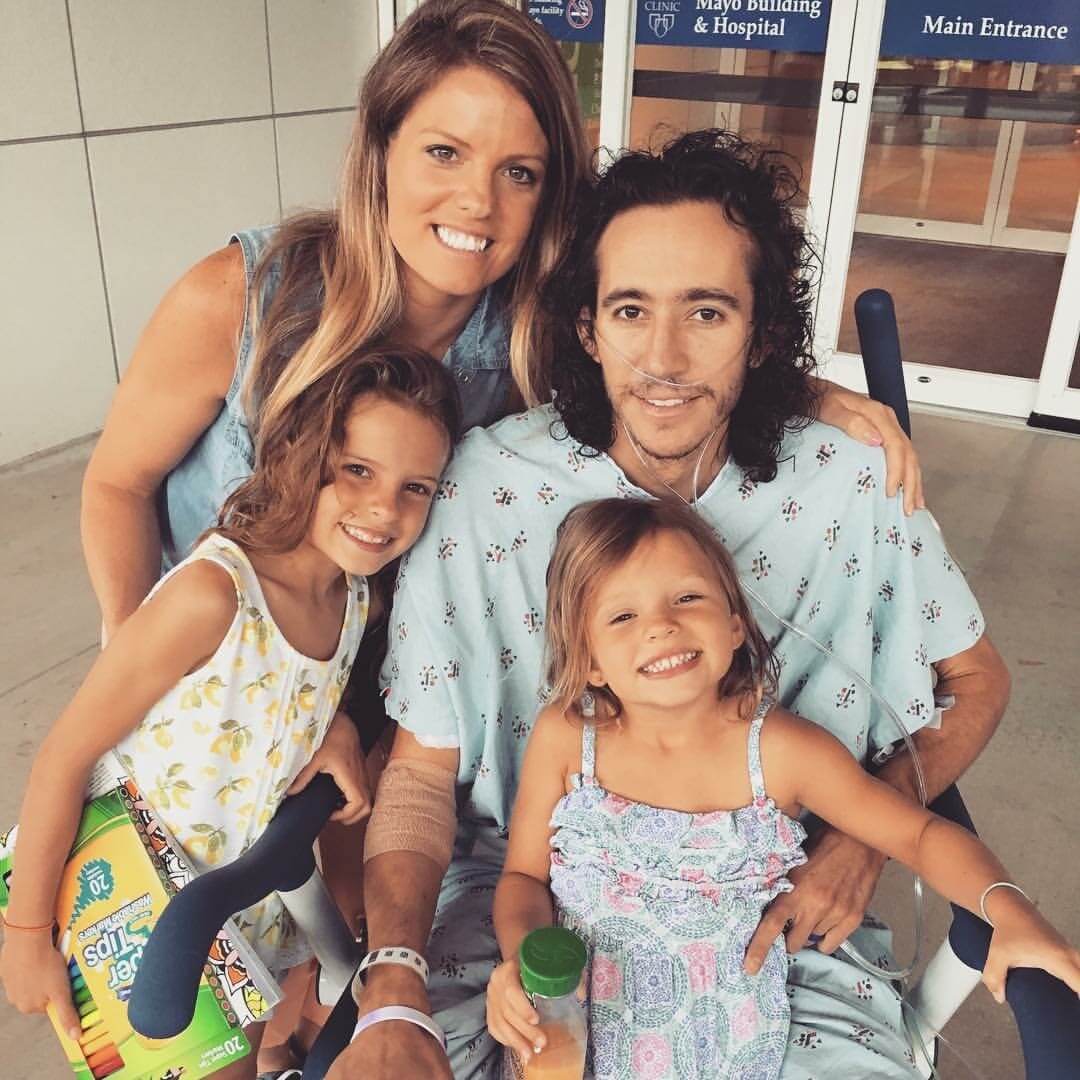Robert Rohmann
Florida, USA
Being on the water was a way of life for Robert Rohmann. The active 30-year-old had fished and surfed his entire life, even becoming a pro surfer in his mid-teens. In his early 20s, after years in the surf industry, Robert decided to use his fishing skills as a source of income and became a captain.
When the father of two young daughters left for a surfing trip to Barbados in January 2016, life was seemingly normal. Robert had been experiencing unusual symptoms prior to the trip, including difficulty breathing, shortness of breath, and dizziness. But he didn’t think the symptoms were cause for serious alarm.
Everything changed on that Barbados trip. When Robert came paddling in from the water while surfing, he looked like a “ghost” according to friends.
Following a visit to the hospital, Robert was diagnosed with a pulmonary embolism (blood clots in his lungs) and pulmonary hypertension. He spent the next three weeks hospitalized in Barbados, where doctors put him on an anticoagulant and steady oxygen.
Once he returned home to Florida, USA, Robert and his wife, Arianne, spent the next few months searching for answers. Why was a perfectly healthy 30-year-old male suddenly battling for his life?
As Robert’s condition worsened, doctors found more blood clots in his legs and lungs (known as venous thromboembolism or VTE). His energy and strength began to decline.
“There were days when he was so exhausted that I had to walk him inch by inch to the bathroom holding him upright,” Arianne said. “Some days I had to help him brush his teeth because his arms were too heavy for him to lift.”
Robert was eventually diagnosed with chronic thromboembolic pulmonary hypertension (CTEPH), a rare condition that can develop in people who have experienced an acute pulmonary embolism. He would be transferred to an Intensive Care Unit (ICU) where he stayed for a month and a half with Arianne by his side.
Soon, the right side of Robert’s heart began to fail. His doctors decided to undergo surgery called pulmonary thromboendarterectomy to remove blood clots from the pulmonary arteries, as well as repair the tricuspid valve.
While doctors were able to remove some of the clots in Robert’s lungs, many were too scattered and could not be removed. The surgery was unable to lower his pulmonary hypertension levels.
Robert remained in a medically induced coma until he passed away two weeks later with Arianne by his side in June 2016.
In the short time since Robert’s death, Arianne and their two daughters are still learning to navigate life without him.
“There is no order in which the emotions come. Some days I am numb and some days I am appreciative. Grief comes in waves,” Arianne said. “Of course, the best healer is hugs from our two little daughters that each have half of Robert’s heart. When combined, it means I get his whole heart forever.”
Arianne understands the potential severity of blood clots and is an advocate for understanding the risk factors, signs, and symptoms of thrombosis.
“When you hear the two words ‘blood clot’ you don’t think of death. We hear ‘cancer’ and instantly think of death,” she said. “What people don’t know about a blood clot is all that can branch from it, including pulmonary hypertension. I only had five months with my husband after he was diagnosed.”

